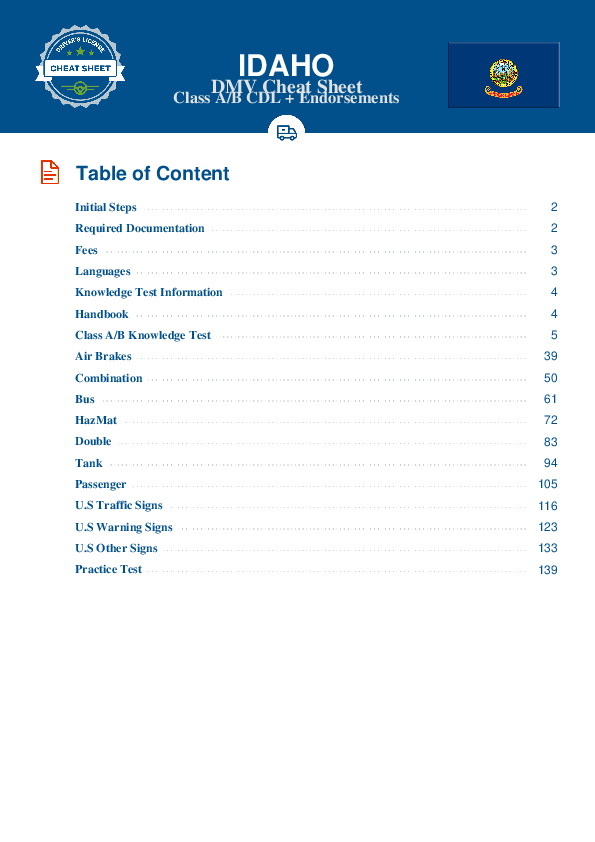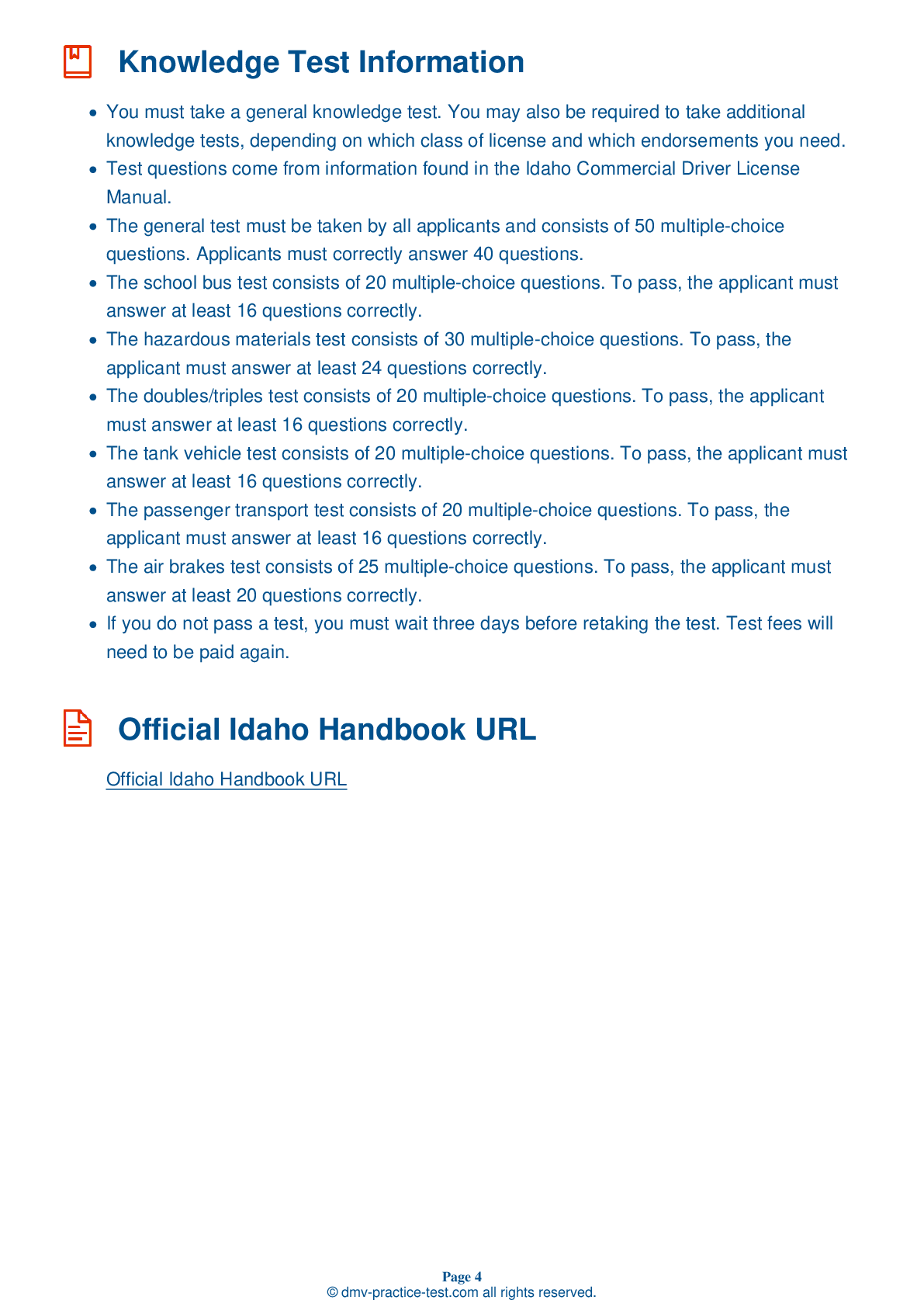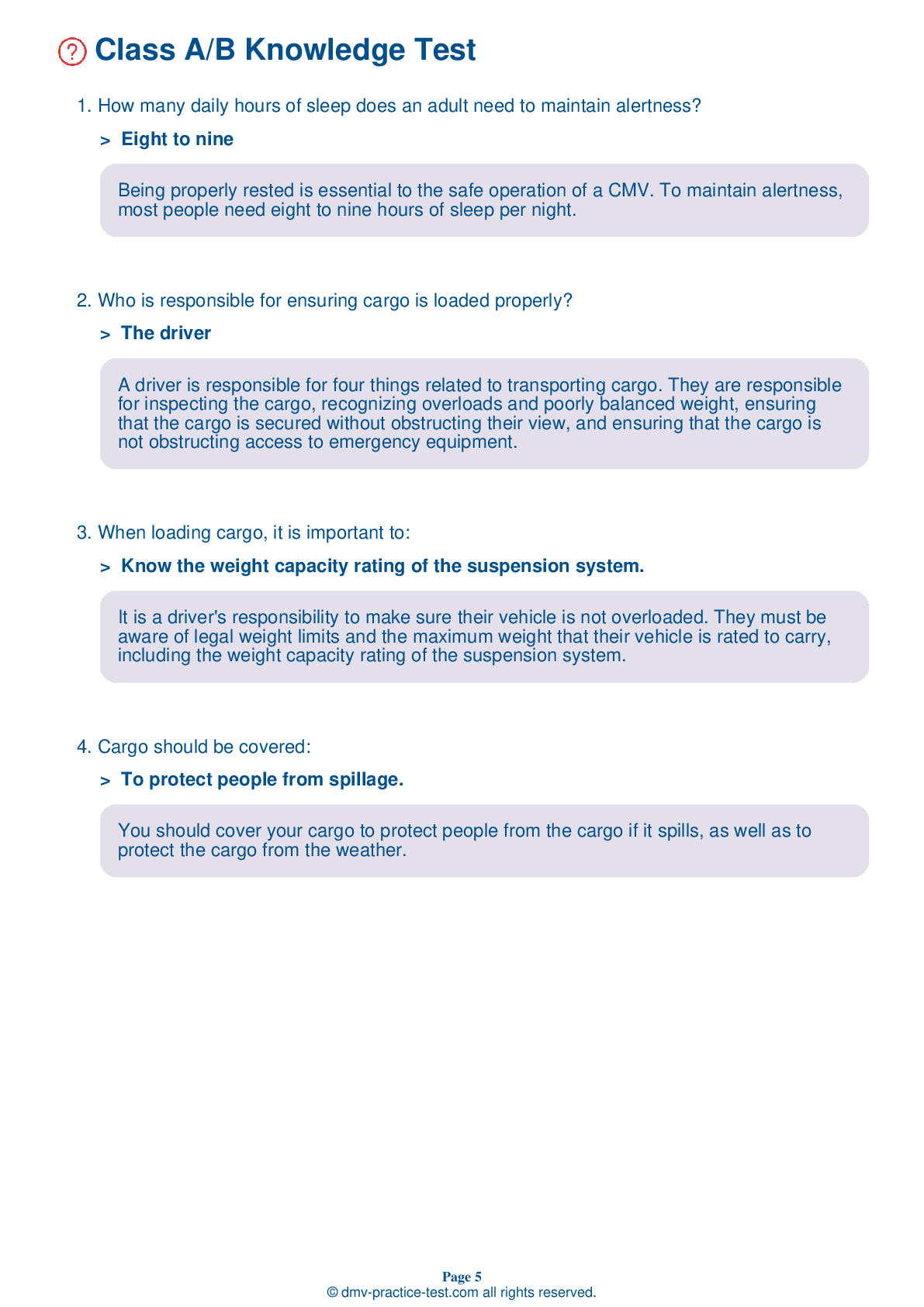Bus Driver Testing | Idaho 2025 #2 Page 3 of 3
Train for FREE online with our ID bus CDL test. The official exam test consists of several obligatory parts, with all of them checking your knowledge of different blocks of road rules. If you need to obtain a license in Idaho in 2025, learn how to become a bus driver and then practice as much as possible. Free sample tests published on our website will help you check and improve your knowledge and boost your grades. Please bear in mind that DMV requirements for a bus driver may vary from state to state.
15 . Why are multi-speed axles and auxiliary transmissions used?
On many vehicles, multi-speed rear axles and auxiliary transmissions are used to provide extra gears.
16 . If there is a fire in your vehicle, you should not:
In the event of a vehicle fire, you should leave the road and stop in an open area. Do not pull into a service station as fuels at the service station could catch fire. Report the fire and your location to emergency services.
17 . When alley docking, you should first:
If you are asked to alley dock, you should first pull past the alley and stop your vehicle in a position that is parallel to the outer boundary. From there, you should back your vehicle entirely into the alley parking area. Your vehicle should be parked in a straight position within the boundaries of the parking space.
18 . For safety purposes, when should you turn off a retarder?
Retarders are mechanisms in some vehicles that help slow a vehicle and reduce the need for braking. However, using a retarder may cause wheels to skid when they have poor traction. Turn off retarders when traveling under wet, snowy, or icy conditions.
19 . If a vehicle is equipped with power steering, the hoses should be checked:
When inspecting a vehicle that is equipped with power steering, check the hoses, pumps, and fluid level. In particular, you should look for leaks in the hoses.
20 . Hydroplaning usually occurs:
Hydroplaning occurs on surfaces where water has collected. If there is enough water, vehicles can hydroplane at speeds as low as 30 mph. Hydroplaning becomes more likely if tires are under-inflated or if the tread is worn.
See the exact questions that will be on the 2025 Idaho DMV exam.
99.2% of people who use the cheat sheet pass the FIRST TIME
Lillian MCcranie explains how our CDL study guide was helpful in passing the exam and recommends it to everyone.
Cameron tells us how he purchased the CDL exam, and found it to be a useful tool which helped him pass the exam and find a job.



